Abstract
A bis-phenanthridinium salt has been synthesized and its DNA-binding studied. Evidence provided by UV and CD spectra, by thermal denaturation profiles and by equilibrium dialysis of the drug-DNA complex lead to the conclusion that both phenanthridine moieties intercalate in the helix. The double intercalator appears to be less potent than ethidium chloride as an inhibitor of nucleic acid synthesis in cultured L1210 cells, though it is more potent than a monomeric analog. The low potency may be due to a low cell influx rate.
Full text
PDF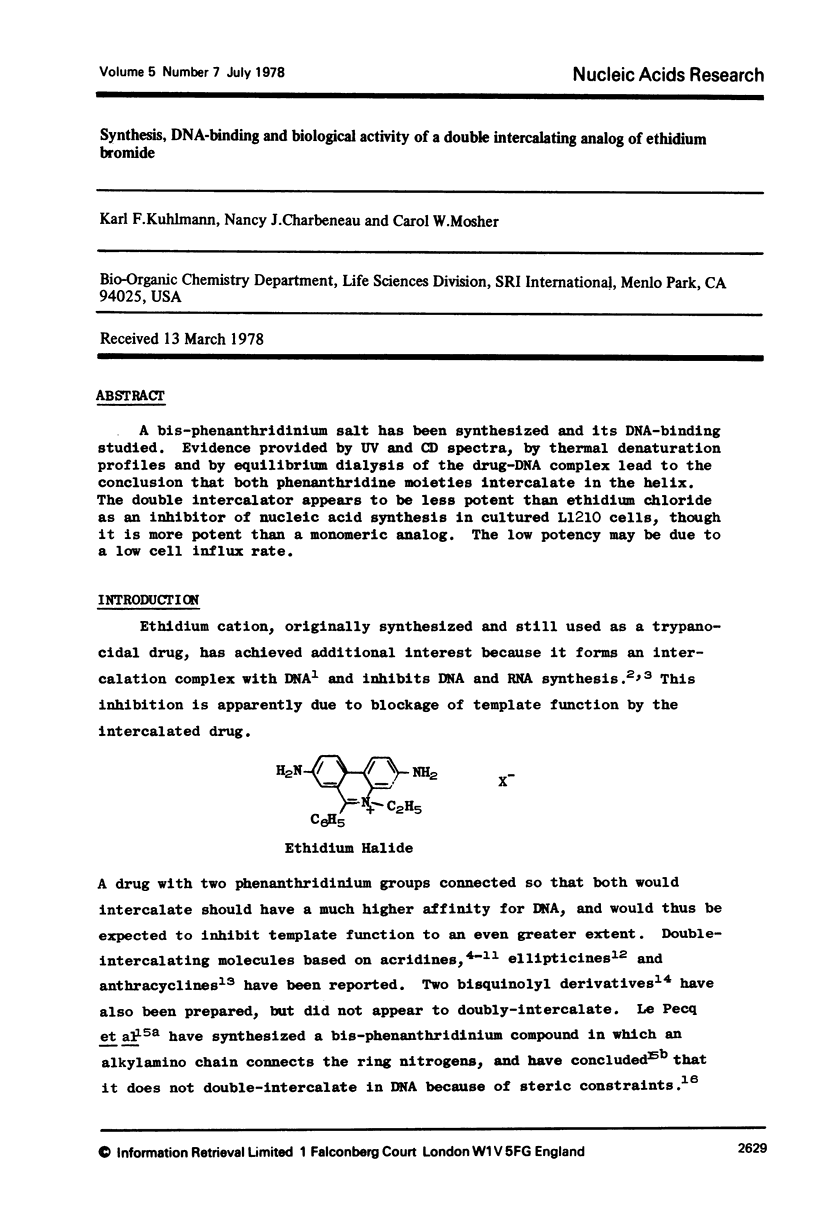
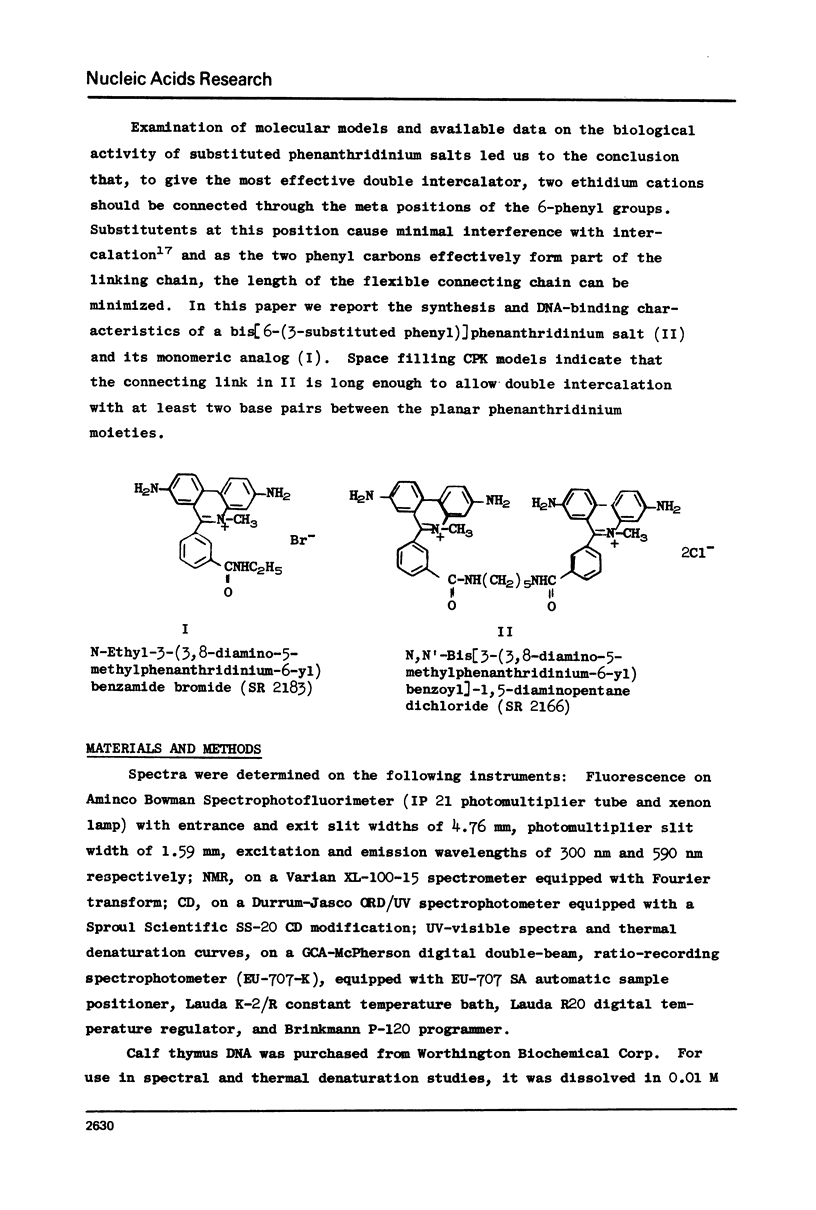
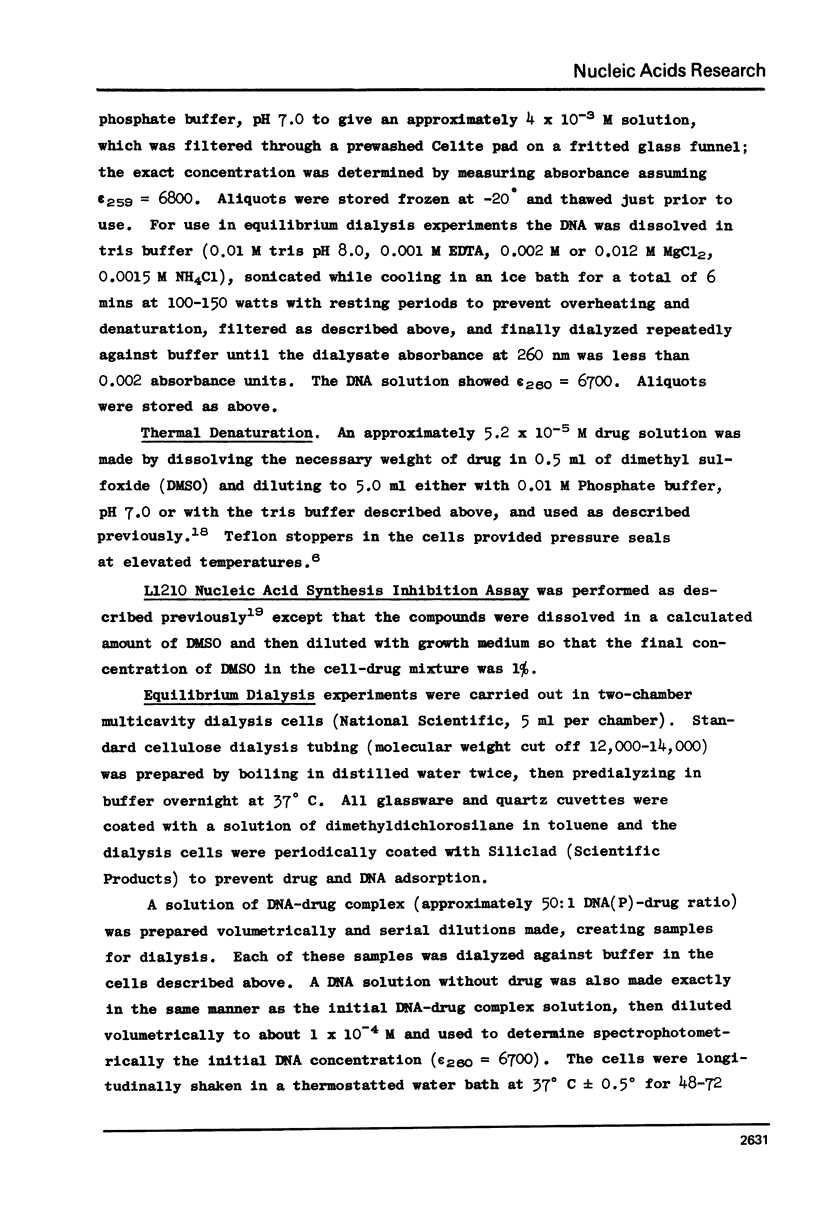
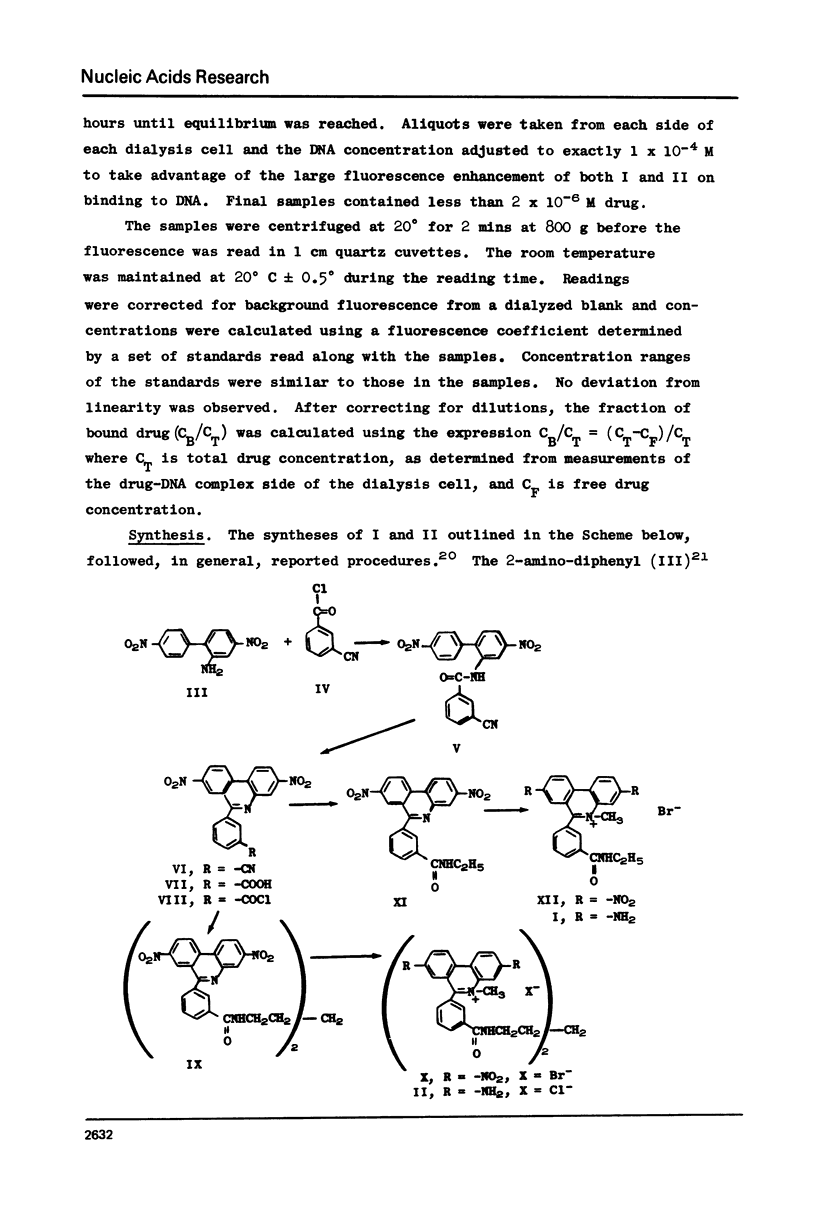
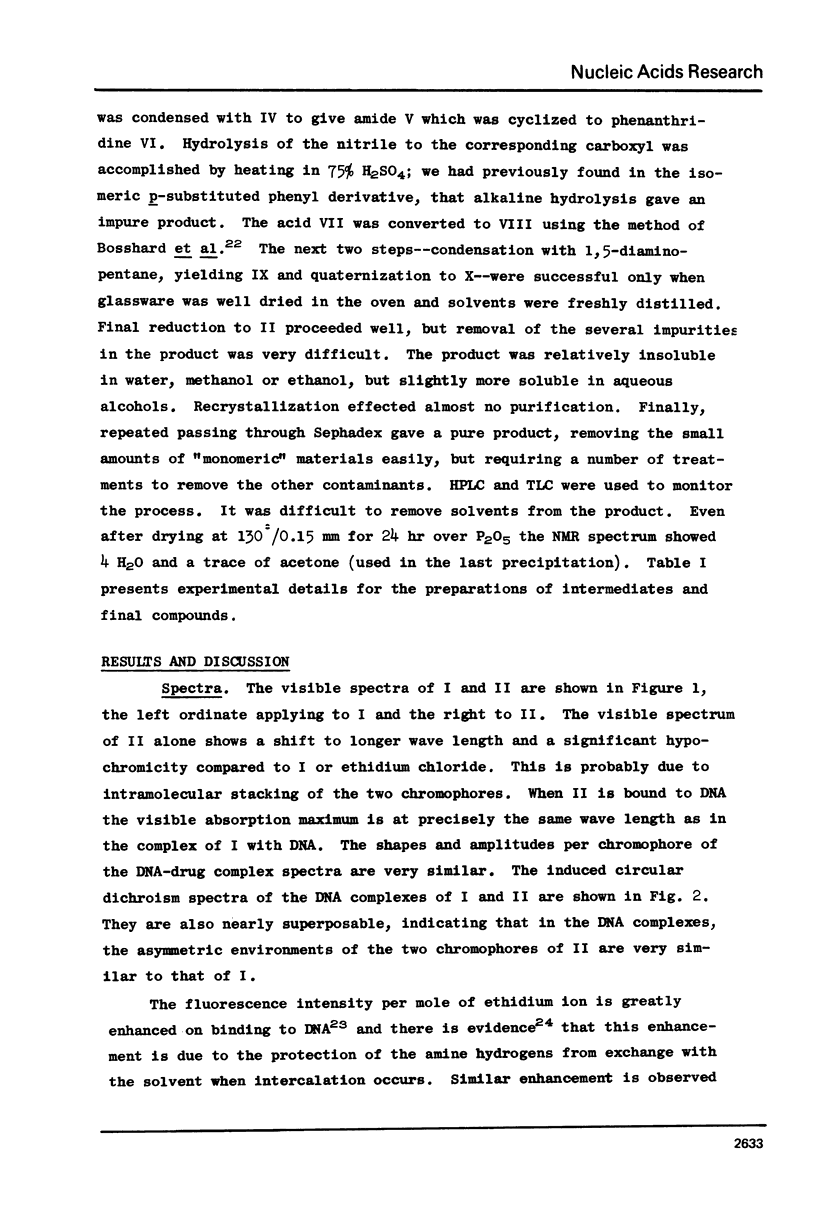
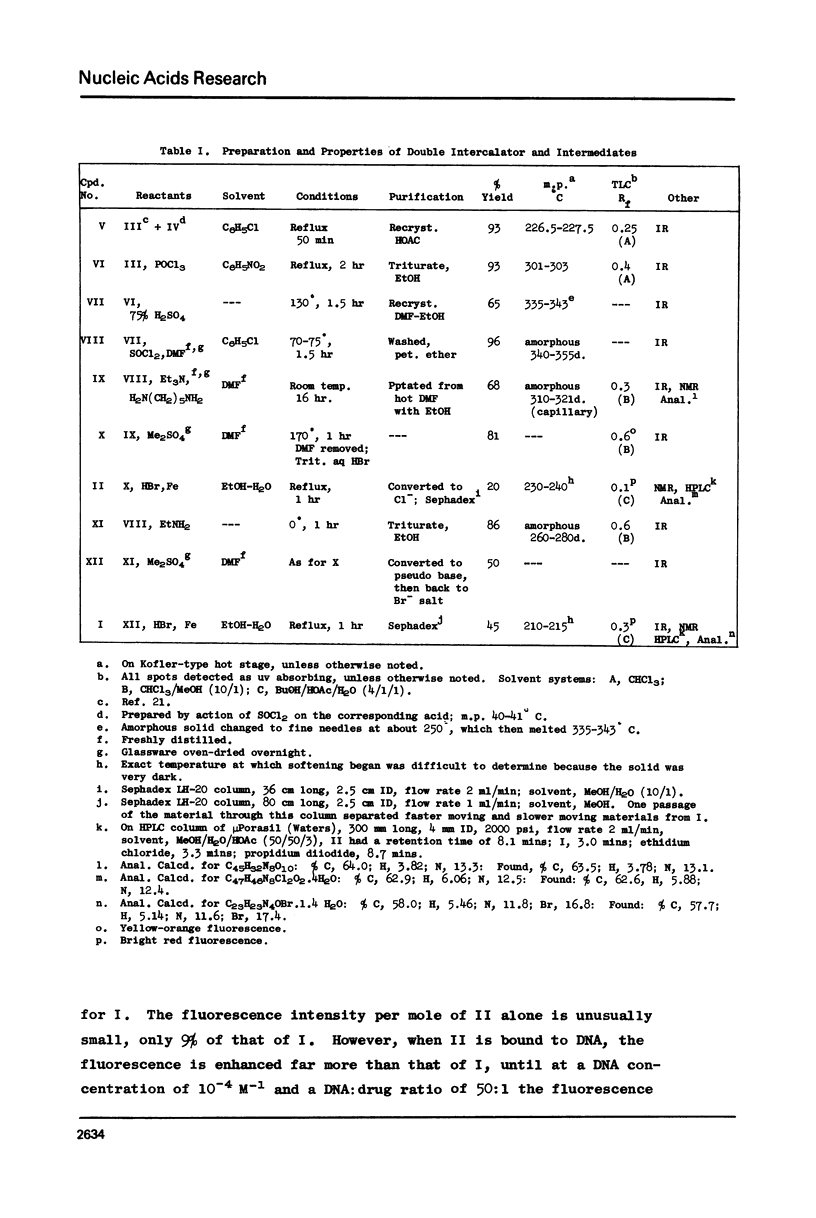
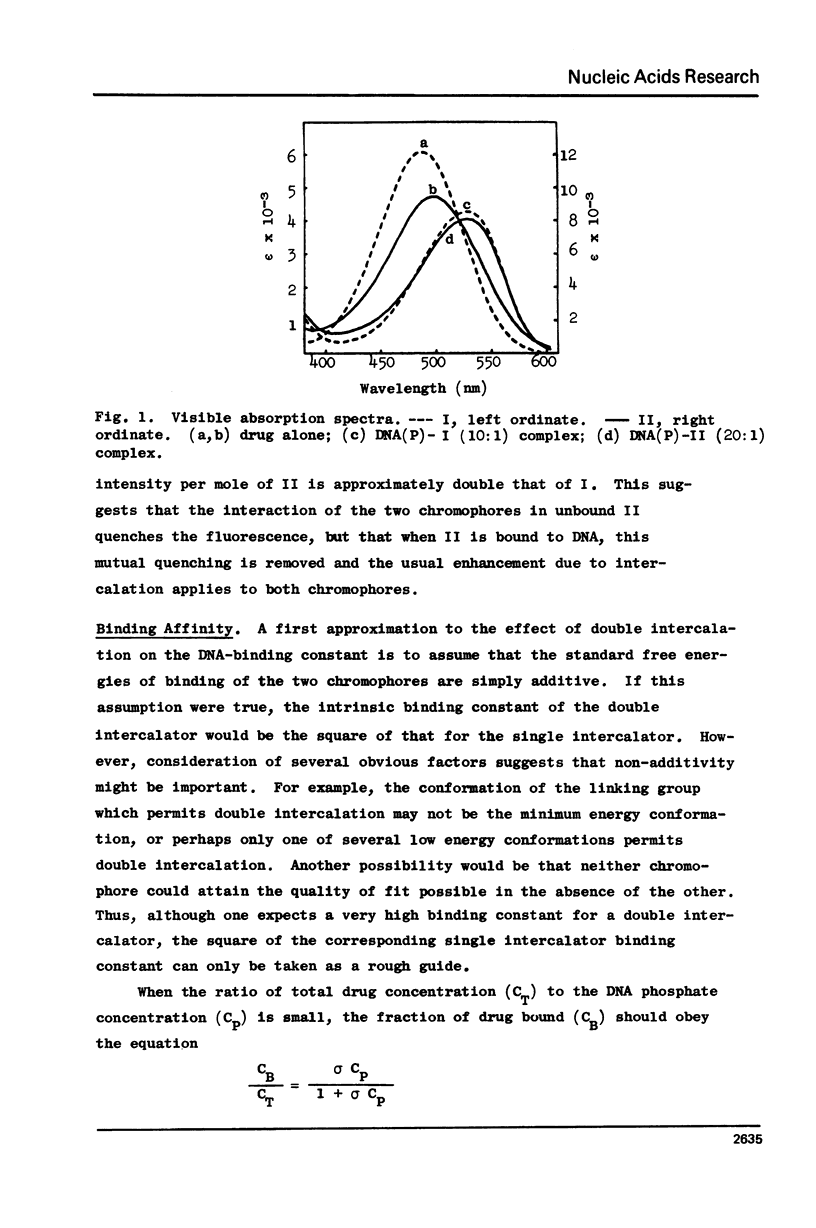
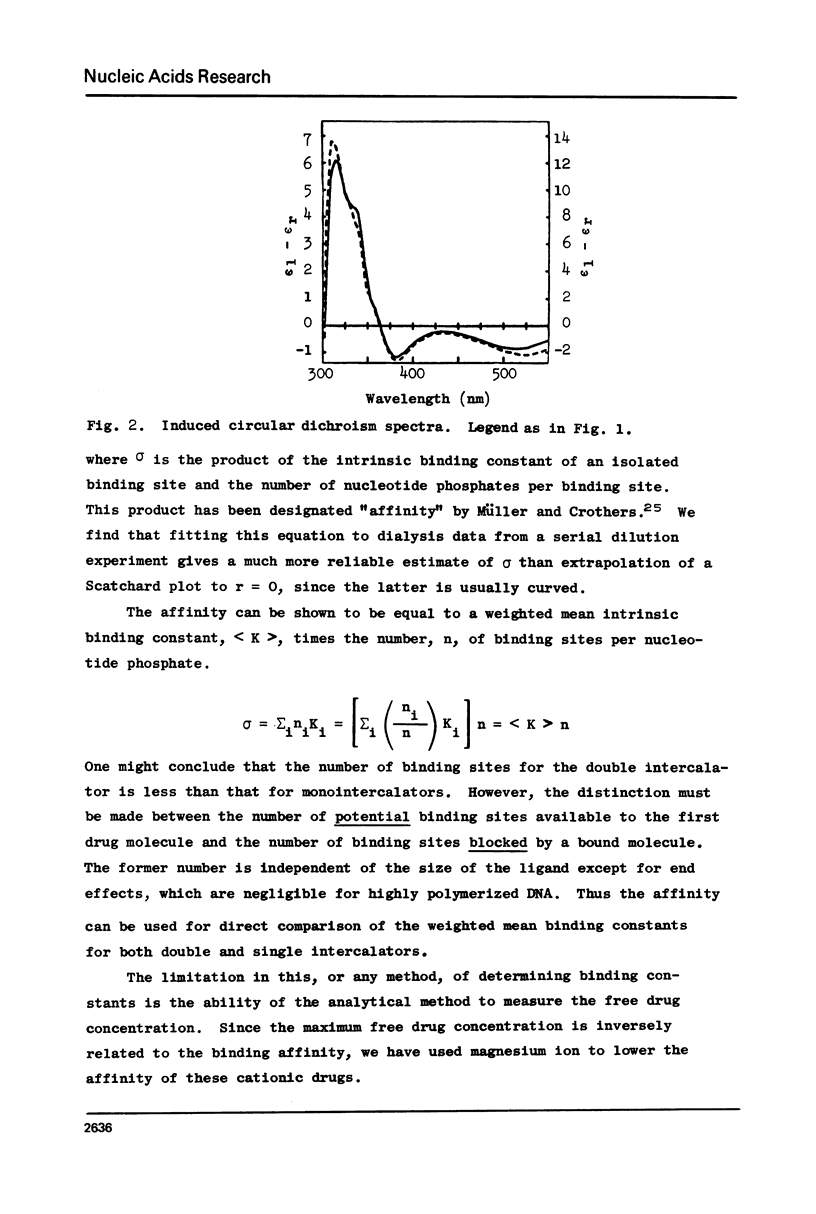
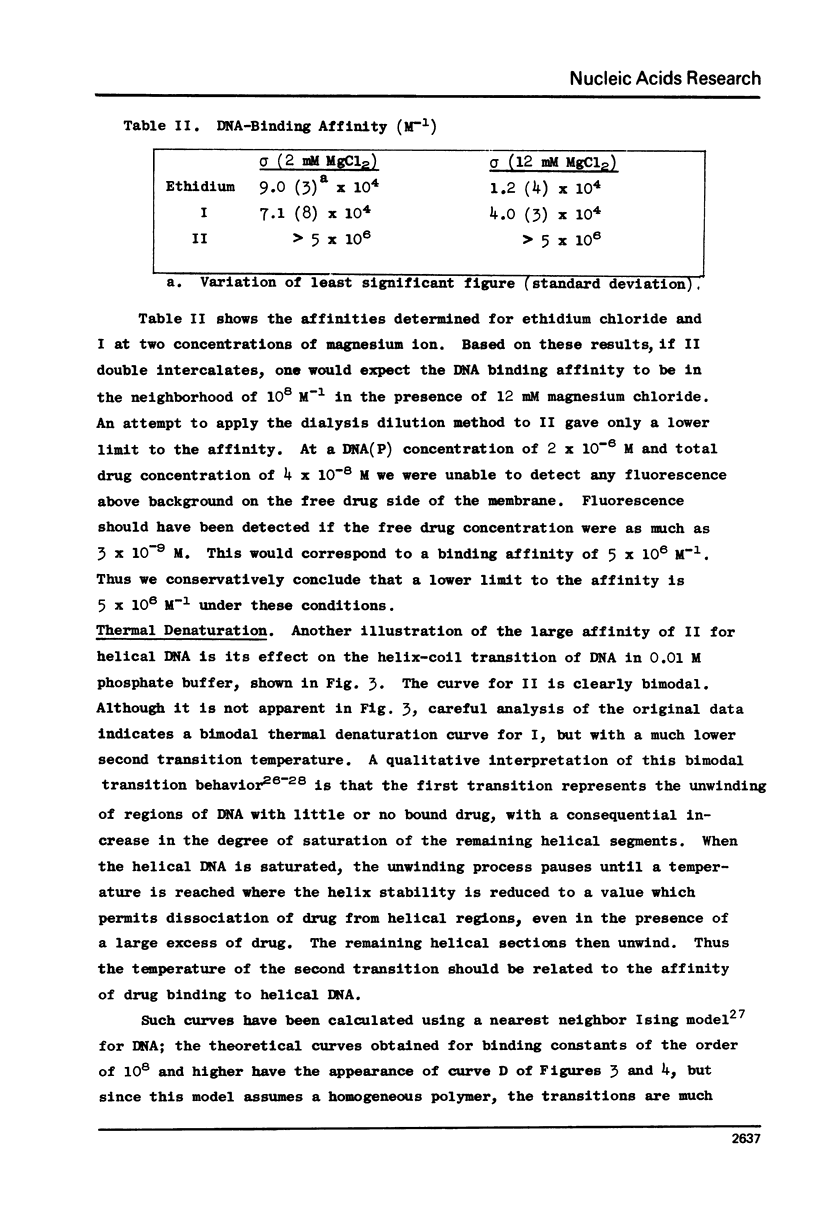
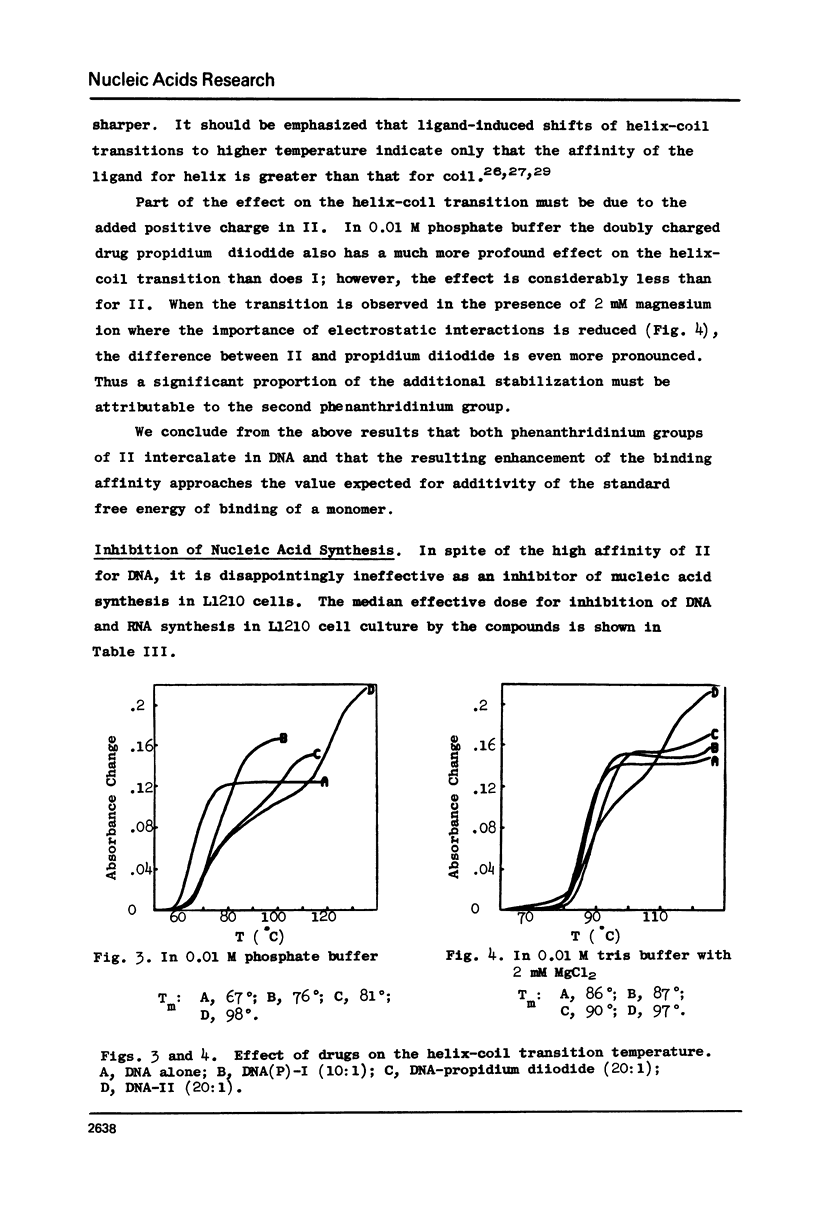
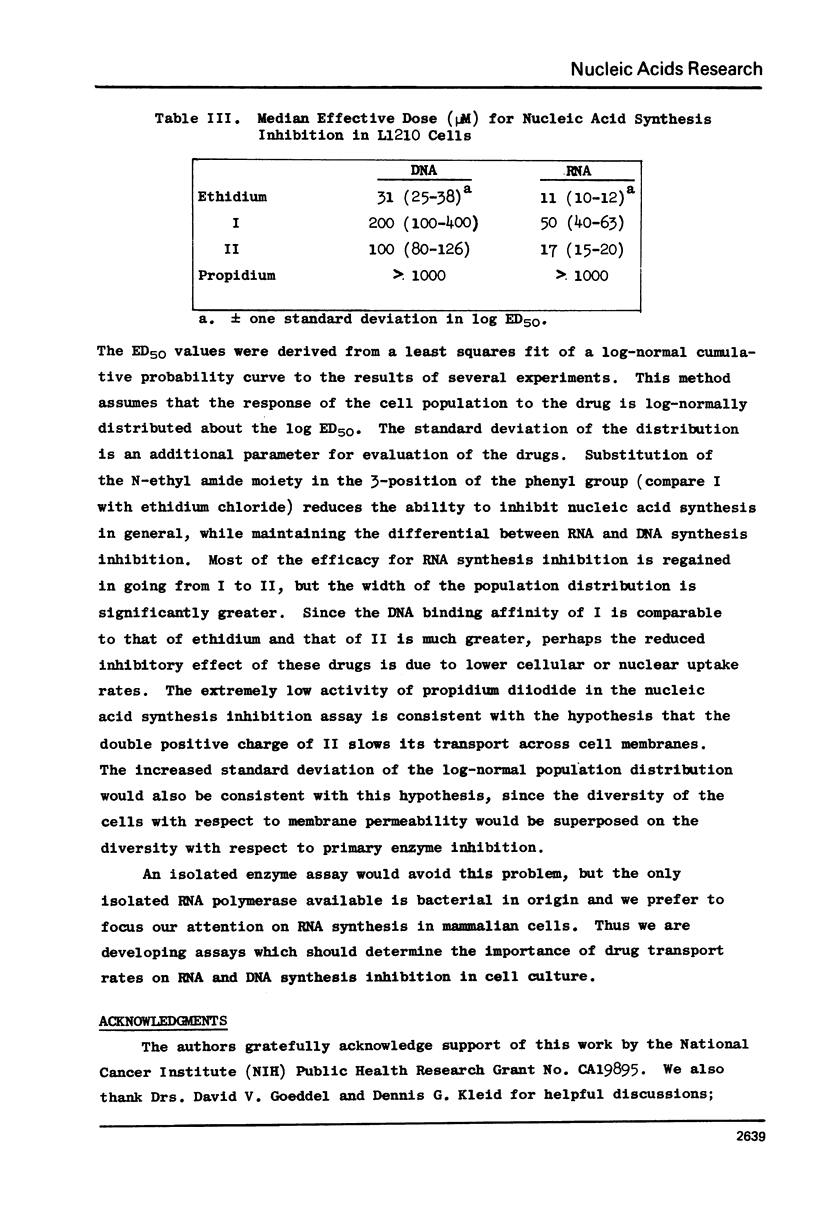
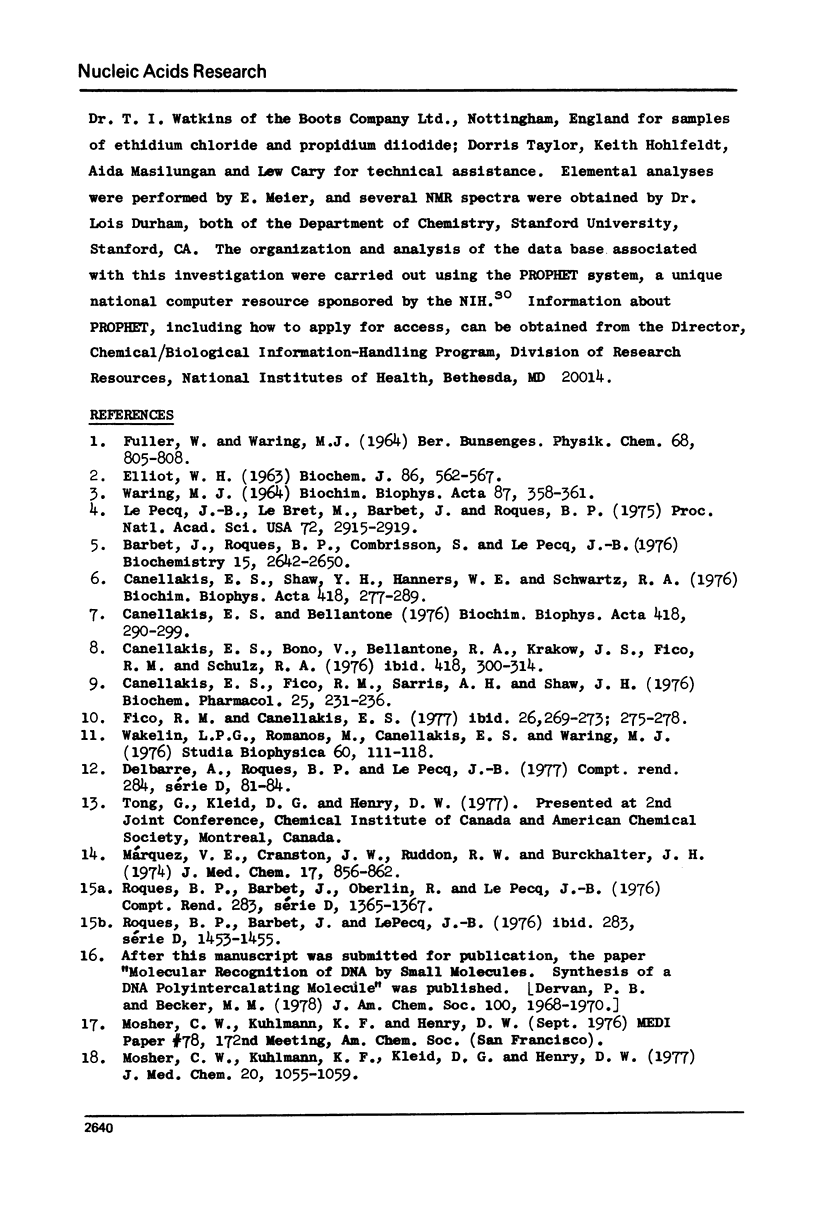
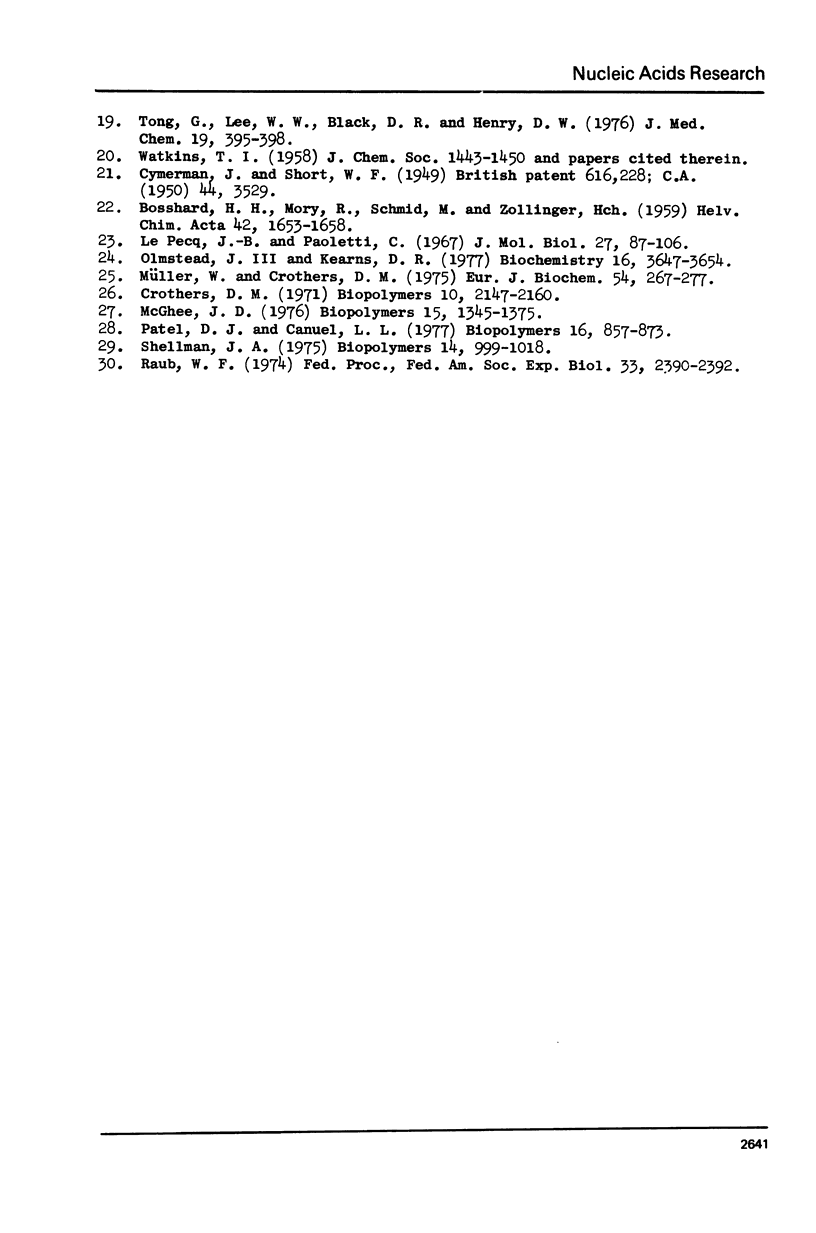
Selected References
These references are in PubMed. This may not be the complete list of references from this article.
- Barbet J., Roques B. P., Combrisson S., Le Pecq J. B. DNA polyintercalating drugs. Proton magnetic resonance studies of a new acridine dimer. Conformations and interactions with mono- and dinucleotides. Biochemistry. 1976 Jun 15;15(12):2642–2650. doi: 10.1021/bi00657a025. [DOI] [PubMed] [Google Scholar]
- Canellakis E. S., Bellantone R. A. Diacridines: bifunctional intercalators. II. The biological effects of putrescine, sperimidine and spermine diacridines on HeLa cells and on the L-1210 and P-388 leukemia cells. Biochim Biophys Acta. 1976 Feb 5;418(3):290–299. doi: 10.1016/0005-2787(76)90291-4. [DOI] [PubMed] [Google Scholar]
- Canellakis E. S., Bono V., Bellantone R. A., Krakow J. S., Fico R. M., Schulz R. A. Diacridines: bifunctional intercalators. III. Definition of the general site of action. Biochim Biophys Acta. 1976 Feb 5;418(3):300–314. doi: 10.1016/0005-2787(76)90292-6. [DOI] [PubMed] [Google Scholar]
- Canellakis E. S., Fico R. M., Sarris A. H., Shaw Y. H. Diacridines - double intercalators as chemotherapeutic agents. Biochem Pharmacol. 1976 Jan 15;25(2):231–236. doi: 10.1016/0006-2952(76)90304-x. [DOI] [PubMed] [Google Scholar]
- Canellakis E. S., Shaw Y. H., Hanners W. E., Schwartz R. A. Diacridines: bifunctional intercalators. I. Chemistry, physical chemistry and growth inhibitory properties. Biochim Biophys Acta. 1976 Feb 5;418(3):277–289. doi: 10.1016/0005-2787(76)90290-2. [DOI] [PubMed] [Google Scholar]
- Crothers D. M. Statistical thermodynamics of nucleic acid melting transitions with coupled binding equilibria. Biopolymers. 1971 Nov;10(11):2147–2160. doi: 10.1002/bip.360101110. [DOI] [PubMed] [Google Scholar]
- Delbarre A., Roques B. P., le Pecq J. B. Composés de poly-intercalation de l'ADN. Synthèse de dimères d'ellipticine. C R Acad Sci Hebd Seances Acad Sci D. 1977 Jan 3;284(1):81–84. [PubMed] [Google Scholar]
- Elliott W. H. The effects of antimicrobial agents on deoxyribonucleic acid polymerase. Biochem J. 1963 Mar;86(3):562–567. doi: 10.1042/bj0860562. [DOI] [PMC free article] [PubMed] [Google Scholar]
- Fico R. M., Canellakis E. S. Diacridines, bifunctional intercalators--V. Inhibition of processing of precursor rRNA and inhibition of methylation of Escherichia coli tRNA. Biochem Pharmacol. 1977 Feb 15;26(4):275–278. doi: 10.1016/0006-2952(77)90176-9. [DOI] [PubMed] [Google Scholar]
- Le Pecq J. B., Le Bret M., Barbet J., Roques B. DNA polyintercalating drugs: DNA binding of diacridine derivatives. Proc Natl Acad Sci U S A. 1975 Aug;72(8):2915–2919. doi: 10.1073/pnas.72.8.2915. [DOI] [PMC free article] [PubMed] [Google Scholar]
- McGhee J. D. Theoretical calculations of the helix-coil transition of DNA in the presence of large, cooperatively binding ligands. Biopolymers. 1976 Jul;15(7):1345–1375. doi: 10.1002/bip.1976.360150710. [DOI] [PubMed] [Google Scholar]
- Mosher C. W., Kuhlmann K. F., Kleid D. G., Henry D. W. 2-Deaminoactinomycin D, synthesis and interaction with deoxyribonucleic acid. J Med Chem. 1977 Aug;20(8):1055–1059. doi: 10.1021/jm00218a013. [DOI] [PubMed] [Google Scholar]
- Márquez V. E., Cranston J. W., Ruddon R. W., Burckhalter J. H. Binding to deoxyribonucleic acid and inhibition of ribonucleic acid polymerase by analogs of chloroquine. J Med Chem. 1974 Aug;17(8):856–862. doi: 10.1021/jm00254a015. [DOI] [PubMed] [Google Scholar]
- Müller W., Crothers D. M. Interactions of heteroaromatic compounds with nucleic acids. 1. The influence of heteroatoms and polarizability on the base specificity of intercalating ligands. Eur J Biochem. 1975 May;54(1):267–277. doi: 10.1111/j.1432-1033.1975.tb04137.x. [DOI] [PubMed] [Google Scholar]
- Olmsted J., 3rd, Kearns D. R. Mechanism of ethidium bromide fluorescence enhancement on binding to nucleic acids. Biochemistry. 1977 Aug 9;16(16):3647–3654. doi: 10.1021/bi00635a022. [DOI] [PubMed] [Google Scholar]
- Patel D. J., Canuel L. L. Biphasic helix-coil transition of the ethidium bromide-poly (dA-dT) and the propidium diiodide - poly (dA-dT) complexes. Stabilization of base-pair regions centered about the intercalation site. Biopolymers. 1977 Apr;16(4):857–873. doi: 10.1002/bip.1977.360160410. [DOI] [PubMed] [Google Scholar]
- Raub W. F. The PROPHET system and resource sharing. Fed Proc. 1974 Dec;33(12):2390–2392. [PubMed] [Google Scholar]
- Roques B. P., Barbet J., Le Pecq J. B. Etude par RMN 1H de l'autoassociation en solution aqueuse du bromure d'éthidium et dimère de phénanthridinium. C R Acad Sci Hebd Seances Acad Sci D. 1976 Nov 15;283(12):1453–1455. [PubMed] [Google Scholar]
- Roques B. P., Barnet J., Oberlin R., Le Pecq J. B. Composés d'intercalation de l'ADN. synthèse de quelques monomères et d'un dimère de phénanthridinium á chaînes aminoalcoylées. C R Acad Sci Hebd Seances Acad Sci D. 1976 Nov 8;283(11 500):1365–1367. [PubMed] [Google Scholar]
- Tong G., Lee W. W., Black D. R., Henry D. W. Adriamycin analogs. Periodate oxidation of adriamycin. J Med Chem. 1976 Mar;19(3):395–398. doi: 10.1021/jm00225a011. [DOI] [PubMed] [Google Scholar]
- WARING M. J. COMPLEX FORMATION WITH DNA AND INHIBITION OF ESCHERICHIA COLI RNA POLYMERASE BY ETHIDIUM BROMIDE. Biochim Biophys Acta. 1964 Jun 22;87:358–361. doi: 10.1016/0926-6550(64)90238-5. [DOI] [PubMed] [Google Scholar]


